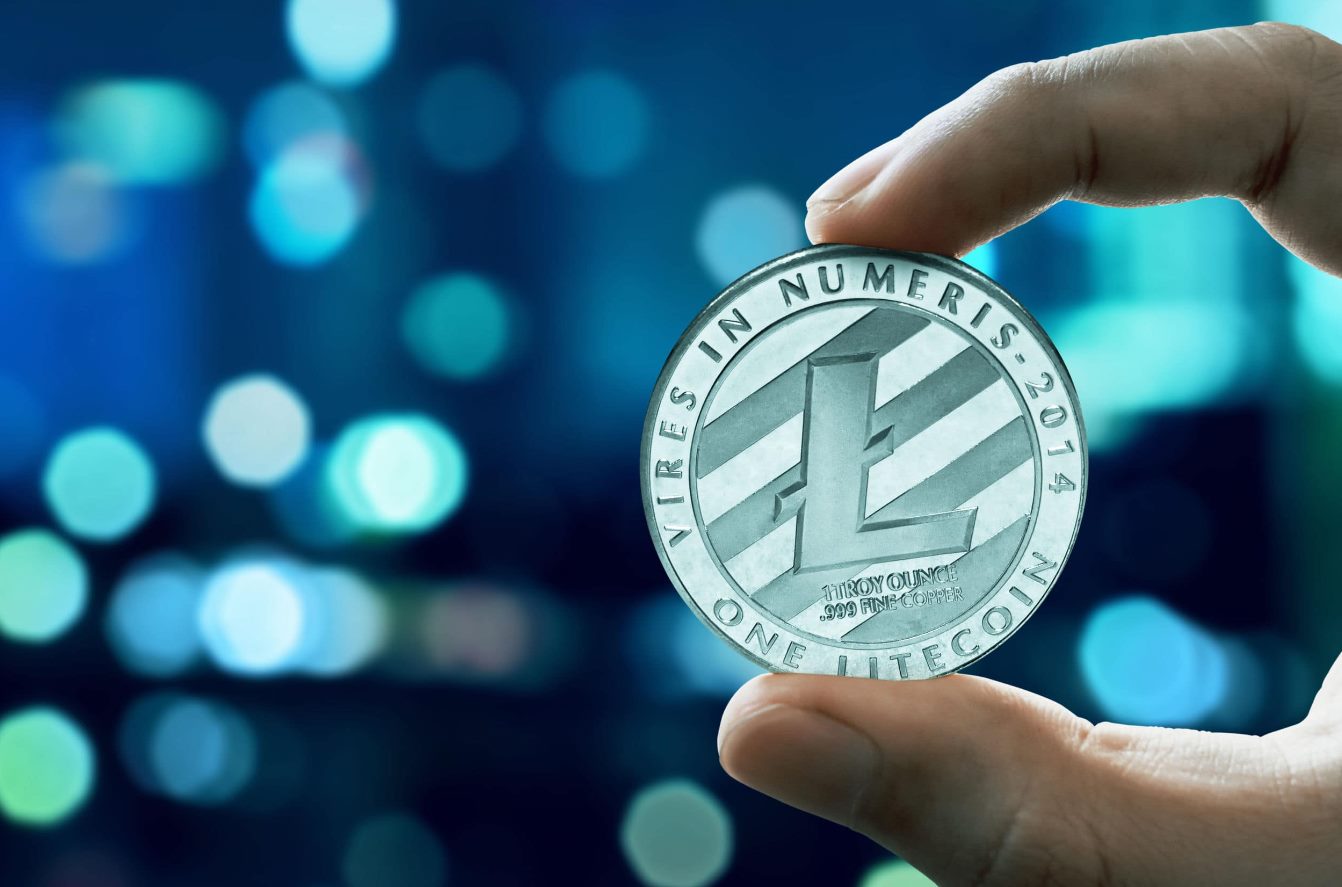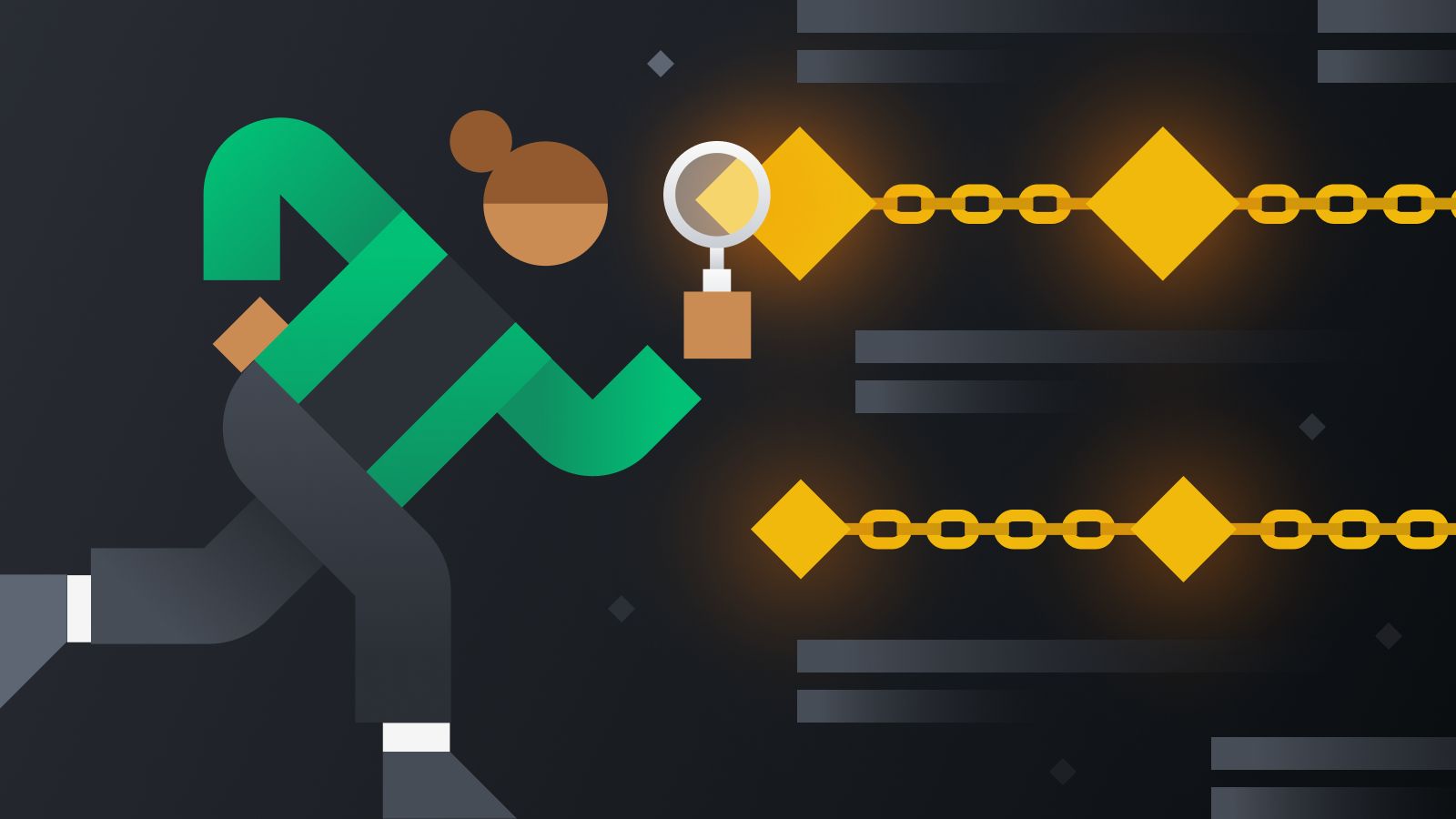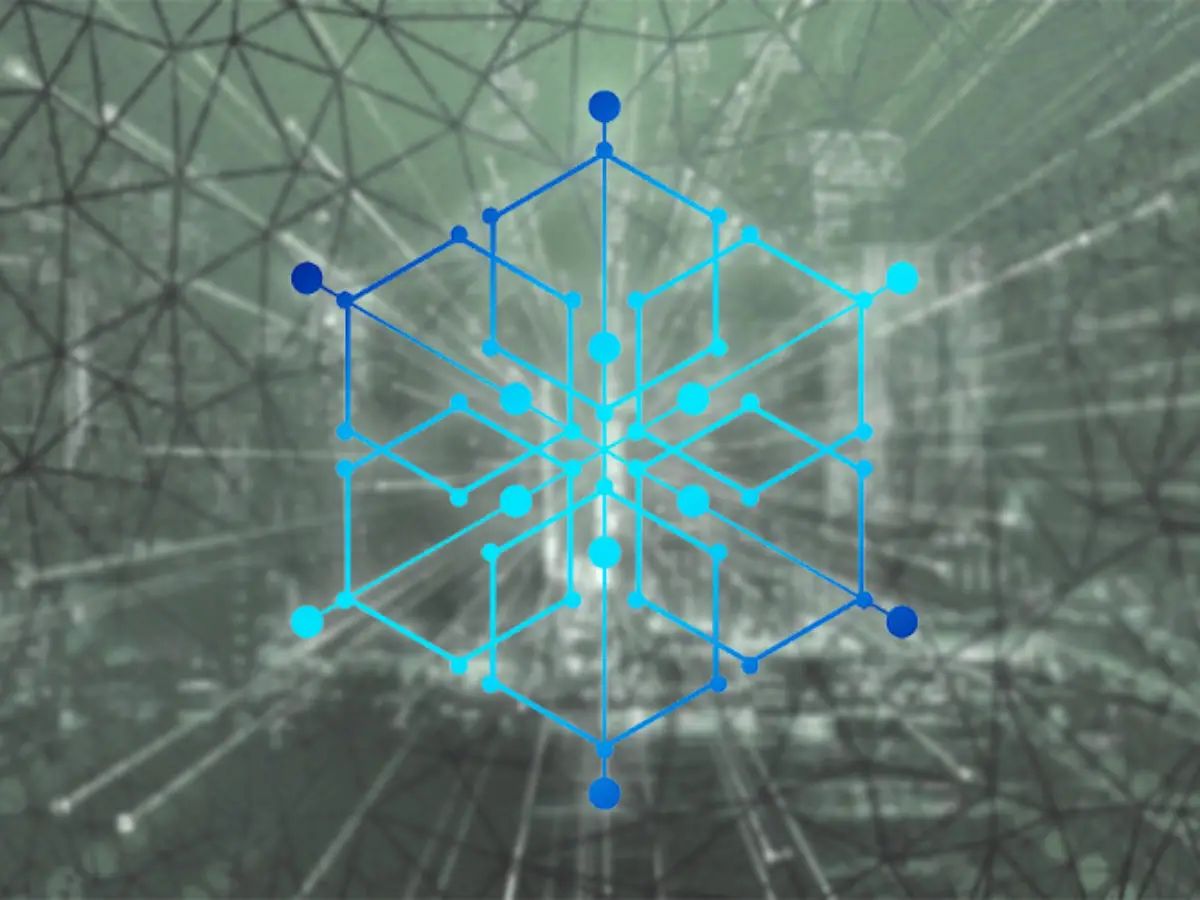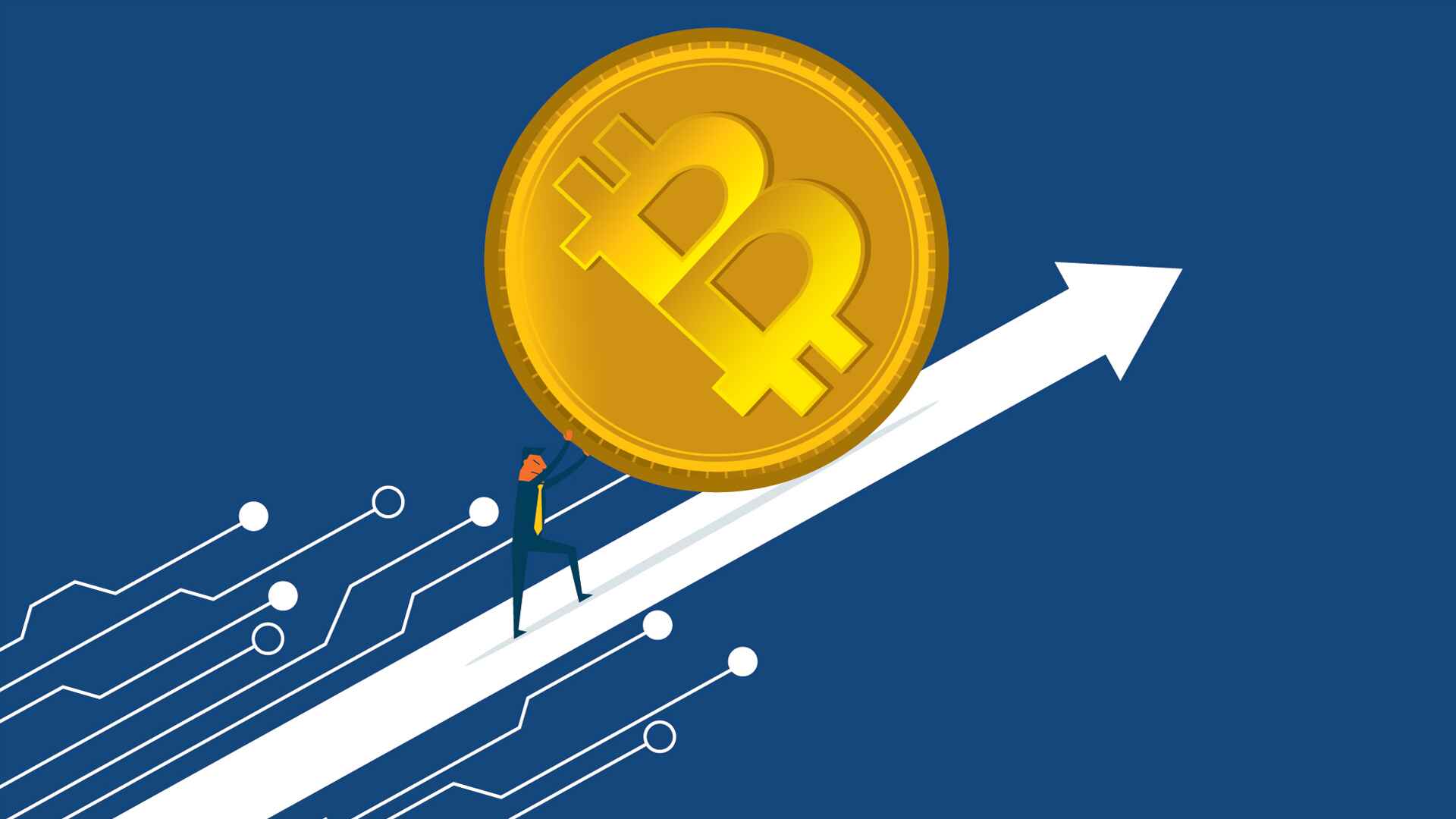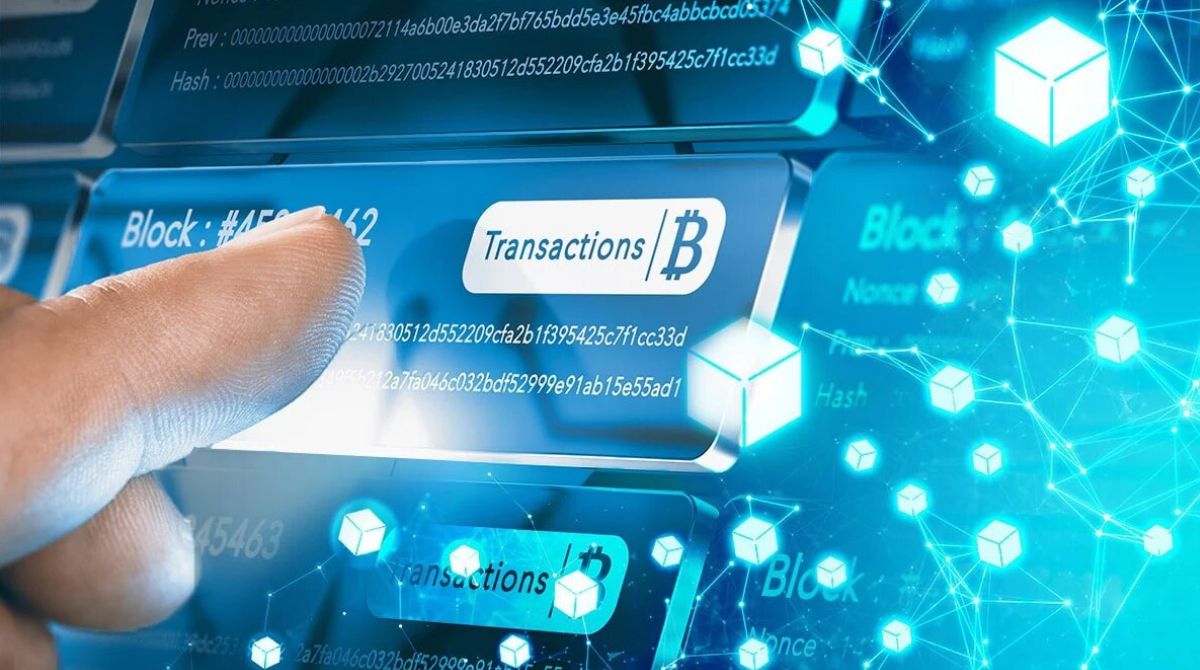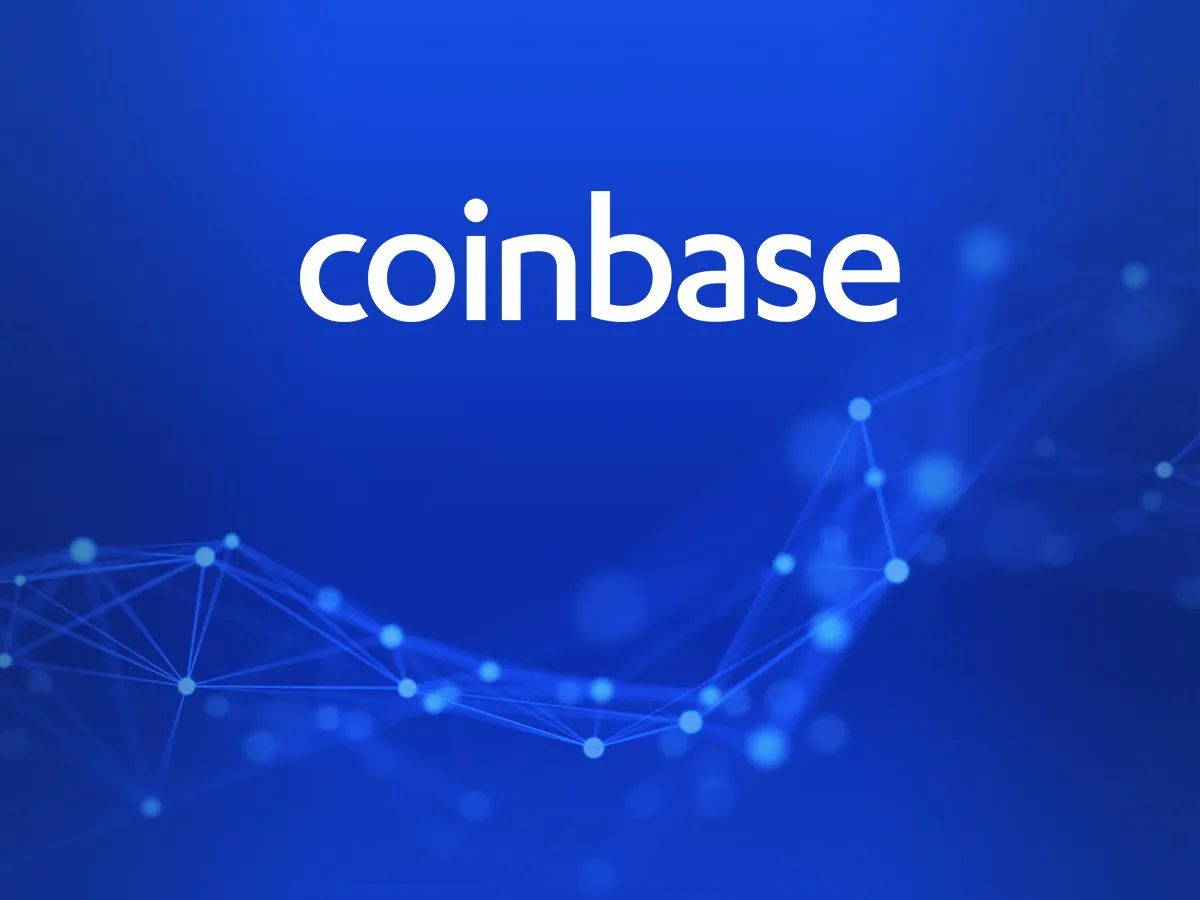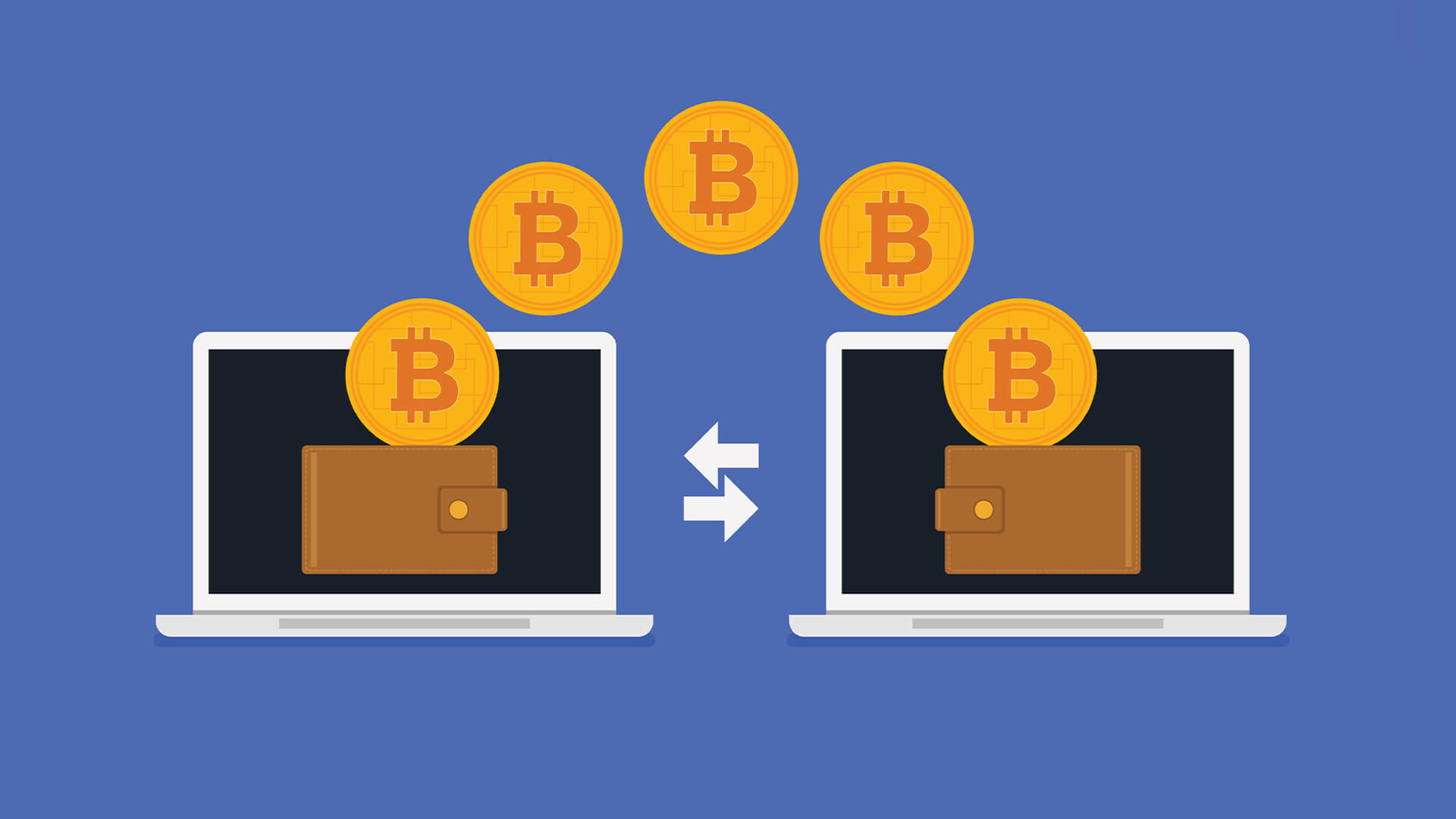What is a blockchain transaction?
A blockchain transaction refers to the transfer or exchange of digital assets or information within a blockchain network. In simple terms, it is the process of recording and validating the movement of data or assets from one digital address to another on a decentralized ledger known as a blockchain.
The concept of blockchain transaction is central to the functionality of blockchain technology. Unlike traditional financial transactions that rely on intermediaries like banks or payment processors, blockchain transactions are peer-to-peer, meaning they occur directly between the sender and the receiver without any third-party involvement.
Each blockchain transaction consists of several vital pieces of information. First, there is the sender’s digital signature, which verifies their ownership of the assets being transferred. Then, there is the recipient’s public key or address, which serves as the destination for the transaction. Additionally, there is the transaction amount, timestamp, and a unique transaction ID that provides a permanent record on the blockchain.
One of the key features of blockchain transactions is their immutability. Once recorded on the blockchain, transactions cannot be altered or reversed, providing a high level of security and trust. The decentralized nature of blockchain technology ensures transparency and prevents tampering or fraud.
Furthermore, blockchain transactions are often associated with cryptocurrency transactions, such as Bitcoin or Ethereum. However, they can also involve the transfer of other digital assets, including smart contracts, digital records, or even physical assets represented digitally through tokenization.
Overall, blockchain transactions revolutionize the way we exchange value and information, offering a secure, transparent, and efficient alternative to traditional transaction systems. They pave the way for various applications, from cross-border payments and supply chain management to decentralized finance and digital identity verification.
Why view blockchain transactions?
Viewing blockchain transactions is essential for a variety of reasons, whether you are a cryptocurrency enthusiast, a blockchain developer, or a curious individual seeking transparency and accountability. Let’s explore some of the key reasons why you may want to view blockchain transactions.
1. Transparency: Blockchain transactions offer a new level of transparency compared to traditional financial systems. By accessing the blockchain’s public ledger, anyone can view the transactions that have occurred. This transparency fosters trust and allows individuals to verify the legitimacy of transactions.
2. Trust and Security: Blockchain technology is known for its robust security measures. By viewing blockchain transactions, you can ensure the integrity of the network and validate the authenticity of transactions. This trust is particularly important in sectors like finance, supply chain management, and voting systems.
3. Tracking Payments: For individuals and businesses involved in cryptocurrency, viewing blockchain transactions is crucial for tracking payments. By checking the blockchain, you can confirm the status and progress of your transactions, ensuring that funds are sent and received accurately.
4. Auditing and Compliance: Blockchain transactions can streamline auditing processes and enhance compliance efforts. As transaction records are permanent and tamper-proof, organizations can efficiently verify and validate financial information, ensuring adherence to regulatory requirements.
5. Analyzing Market Trends: Blockchain transactions provide a wealth of data that can be used for market analysis and research. By studying transaction patterns and volumes, individuals and businesses can gain insights into market trends, investor behavior, and the overall health of the blockchain ecosystem.
6. Confirming Token Ownership: Viewing blockchain transactions is crucial for verifying token ownership. Whether you are involved in tokenized assets, non-fungible tokens (NFTs), or decentralized applications (dApps), checking the blockchain allows you to confirm your ownership and ensure the validity of your digital assets.
7. Due Diligence: Before engaging in any blockchain-based project or investment, it is essential to perform due diligence. By viewing the blockchain transactions associated with a project or token, you can assess the activity, reputation, and credibility of the involved parties.
8. Empowering Individuals: Blockchain transactions empower individuals by giving them control over their financial assets and data. By understanding and viewing blockchain transactions, individuals can actively participate in the decentralized economy and make informed decisions about their digital assets.
9. Learning and Curiosity: Lastly, viewing blockchain transactions is an educational opportunity. Exploring the blockchain and understanding how transactions work can deepen your understanding of blockchain technology and its potential applications.
In summary, viewing blockchain transactions offers transparency, trust, security, tracking capabilities, auditing benefits, analytical insights, token ownership confirmation, due diligence facilitation, individual empowerment, and educational opportunities. By utilizing the transparency and immutability of blockchain transactions, you can unlock the full potential of blockchain technology.
Creating a Wallet
Before you can view blockchain transactions, you’ll need to create a wallet. A blockchain wallet is essentially a digital wallet that allows you to store, send, and receive digital assets within the blockchain network. Here’s a step-by-step guide on creating a wallet:
- Choose a Wallet Type: There are different types of blockchain wallets available, including software wallets, hardware wallets, and online wallets. Consider your security preferences and convenience when selecting a wallet type.
- Select a Wallet Provider: There are numerous wallet providers in the market, each offering their own features and user experiences. Research and compare different wallet providers to find a reputable and user-friendly option that aligns with your needs.
- Download or Access the Wallet: Once you’ve chosen a wallet provider, download the wallet software or access it through their online platform. Follow the instructions provided by the wallet provider to set up your account.
- Generate a Wallet Address: After creating your wallet, the next step is to generate a wallet address. This alphanumeric address is similar to a bank account number and is used to receive funds or assets. Make sure to keep your wallet address private and secure.
- Set Up Security Measures: To protect your wallet and funds, enable the recommended security measures provided by the wallet provider. This may include setting up two-factor authentication, creating a strong password, and enabling encryption.
- Back up Your Wallet: It is crucial to create a backup of your wallet to prevent the loss of funds in case of device failure or theft. Most wallet providers offer backup options, such as seed phrases or private keys. Follow the backup instructions carefully and store this information securely.
- Add Funds to Your Wallet: To start viewing blockchain transactions, you’ll need to add funds to your wallet. Depending on the blockchain network you’re using, you may need to purchase digital assets from exchanges or receive them from other wallets.
- Explore Your Wallet Features: Familiarize yourself with the features and functionalities of your wallet. Most wallets allow you to view transaction history, check the balance of your assets, and interact with the blockchain network.
By following these steps, you can create your own blockchain wallet and start engaging with the blockchain network. Keep in mind that the process may vary slightly depending on the wallet provider and the specific blockchain network you’re using. It’s important to stay vigilant and practice good security measures to protect your wallet and digital assets.
Exploring the Blockchain
Once you have a wallet and are ready to delve into the world of blockchain, you can start exploring the blockchain network. Understanding how to navigate and explore the blockchain will allow you to view and analyze its transactions, gaining valuable insights and information. Here are some key steps to start exploring the blockchain:
- Select a Blockchain Explorer: A blockchain explorer is a tool or platform that allows you to interact with the blockchain network and view its transactions. Depending on the blockchain network you’re interested in, choose a reputable and user-friendly explorer.
- Enter the Transaction ID or Wallet Address: To view a specific transaction or wallet’s activity, enter the unique transaction ID or wallet address into the search bar of the blockchain explorer. This will direct you to the relevant transaction or address details.
- Browse the Transaction History: Explore the transaction history to see the list of transactions that have occurred on the blockchain network. You can often find details such as the transaction amount, sender and receiver addresses, timestamps, and more.
- Examine Confirmation Status: The blockchain explorer will indicate the confirmation status of a transaction. This provides insight into how many confirmations the transaction has received from network nodes, indicating its validity and security.
- Follow Transaction Links: Many blockchain explorers provide the option to follow links to explore more details about the involved addresses, previous and subsequent transactions, and additional information related to the transaction of interest.
- View Transaction Details: By selecting a specific transaction, you can delve deeper into the transaction details. This may include the transaction size, associated fees, block height, and various technical details relevant to the blockchain network.
- Track Multiple Addresses: If you’re interested in monitoring the activity of multiple addresses, you can create a watchlist within the blockchain explorer. This allows you to easily keep tabs on transactions and addresses of your choice.
- Toggle Between Different Blockchain Networks: If you’re exploring multiple blockchain networks, the blockchain explorer may provide an option to switch between different networks. This allows you to view and analyze transactions on various blockchains.
Exploring the blockchain opens up a world of insights and information about the transactions occurring within the network. It enables you to verify and track transactions, analyze trends and patterns, and gain a deeper understanding of the blockchain’s functionality and ecosystem.
Remember to exercise caution when exploring the blockchain, as some blockchain networks have transaction costs associated with viewing or interacting with transactions. Additionally, always use reputable blockchain explorers and double-check the web address to prevent falling victim to phishing attempts.
By following these steps and using a blockchain explorer, you can dive into the vast realm of blockchain transactions and gain invaluable knowledge and understanding of how value and information flow within the blockchain network.
Finding a Specific Transaction
Blockchain technology allows you to search and find specific transactions within the blockchain network. Whether you are verifying a payment, conducting an audit, or investigating a particular transaction, here are the steps to help you find a specific transaction:
- Choose a Blockchain Explorer: Select a reliable and user-friendly blockchain explorer that supports the specific blockchain network you are interested in. Examples include Blockchair, Etherscan, or Blockchain.com.
- Access the Blockchain Explorer: Open the chosen blockchain explorer in your web browser. You will typically find a search or search bar prominently displayed on the explorer’s homepage.
- Enter Search Criteria: In the search bar, input the relevant information to find the specific transaction. This could include the transaction ID, wallet address, block number, or any other identifying details.
- Initiate the Search: Click on the “Search” or “Find” button to initiate the search process. The blockchain explorer will then attempt to locate the matching transaction based on your provided search criteria.
- Analyze the Search Results: The blockchain explorer will display the search results, presenting you with a list of transactions that match your search criteria. Review the results to identify the specific transaction you are looking for.
- Inspect Transaction Details: Once you have located the desired transaction, click on it to view detailed information related to the transaction. This includes transaction amount, transaction ID, sender and receiver addresses, timestamp, and other relevant details.
- Follow Linked Transactions: If necessary, explore any linked transactions associated with the one you are viewing. This can provide additional context or trace the flow of funds between addresses.
- Cross-Check Transaction Details: Verify that the transaction details align with your expectations. Confirm the accuracy of the sender and receiver addresses, payment amount, and any other specific information pertaining to the transaction.
Finding a specific transaction within a blockchain network may vary slightly depending on the explorer and blockchain network you are working with. However, the general process remains consistent. By using a reputable blockchain explorer and providing the necessary search criteria, you can quickly locate and inspect the desired transaction.
Remember, blockchain explorers provide a detailed view of a transaction’s information, allowing you to validate and track transactions in a transparent manner. This is particularly valuable when dealing with cryptocurrencies or verifying the integrity of transactions in decentralized applications.
By following these steps, you can effectively find a specific transaction within the blockchain network, enabling you to conduct audits, track payments, or investigate transactions with ease and reliability.
Tracking Multiple Transactions
When engaging with blockchain networks, it’s often necessary to track multiple transactions for various purposes, such as monitoring payment flows or keeping tabs on specific addresses. Here’s a guide on how to effectively track multiple transactions:
- Use a Wallet with Transaction History: Choose a blockchain wallet that provides a transaction history feature. This enables you to keep track of all your incoming and outgoing transactions in one place.
- Create Watchlists: Most blockchain wallets and explorer platforms allow you to create watchlists, where you can add multiple addresses you wish to monitor. This makes it convenient to track transactions associated with those addresses.
- Set Up Notifications: Explore the settings of your wallet or blockchain explorer to set up transaction notifications. This feature notifies you whenever a transaction occurs in one of the addresses on your watchlist.
- Utilize Blockchain Analytics Tools: Blockchain analytics tools, such as CoinTracker, Blockfolio, or BitQuery, can help you track multiple transactions across different blockchain networks. These tools provide aggregated data and comprehensive insights into your transactions.
- Label Transactions: To keep track of the purpose or significance of each transaction, consider labeling or adding notes to your transactions within your wallet. This helps you differentiate and remember the specifics of each transaction.
- Export Transaction Data: Some wallet and explorer platforms allow you to export transaction data in various formats, such as spreadsheets or CSV files. This export feature enables you to analyze or categorize your transactions externally.
- Utilize Tagging or Categorization Features: If available, take advantage of tagging or categorization features provided by your wallet or blockchain explorer. This allows you to group transactions based on common attributes or categories for easy reference.
- Keep Transaction Records: Maintain a separate record or log of the important transactions you track. This can be a simple spreadsheet or a more advanced accounting software, depending on the complexity of your tracking needs.
- Regularly Review Transaction History: Periodically review your transaction history to ensure that all expected transactions are accounted for. Regularly updating and reconciling your records helps you stay informed and detect any anomalies or discrepancies.
Tracking multiple transactions within the blockchain ecosystem requires organization, attention to detail, and the right tools. By using wallet features, watchlists, notifications, analytics tools, and maintaining comprehensive records, you can effectively monitor and manage multiple transactions with ease.
Remember to always prioritize security and privacy when dealing with multiple transactions. Keep your wallet and associated devices secure, and be cautious of potential phishing attempts or unauthorized access to your transaction information.
With proper tracking techniques in place, you can confidently monitor and stay updated on the status of multiple transactions within the blockchain network, allowing you to make informed decisions and ensure the smooth flow of digital assets.
Analyzing Transaction Details
When viewing blockchain transactions, analyzing the transaction details can provide valuable insights and information about the flow of digital assets, the parties involved, and the overall health of the blockchain network. Here are some key aspects to consider when analyzing transaction details:
- Transaction Amount and Currency: Review the transaction amount to understand the value being transferred. Pay attention to the currency used, whether it’s a cryptocurrency like Bitcoin or Ethereum, or a token specific to the blockchain network.
- Sender and Receiver Addresses: The sender and receiver addresses provide information about the parties involved in the transaction. Analyzing these addresses can help identify the transacting entities and their transaction history.
- Confirmation Status: The confirmation status indicates the number of confirmations a transaction has received from network participants. A higher number of confirmations signifies a more secure and finalized transaction.
- Timestamp: The timestamp reflects the date and time when the transaction was recorded on the blockchain. Analyzing timestamps can reveal transaction trends, including peak periods of activity or transaction delays.
- Transaction Fee: Many blockchain transactions involve a fee to incentivize network miners or validators. Analyzing the transaction fee can provide insights into the transaction’s priority, congestion levels, and network efficiency.
- Block Height: The block height indicates the position of the transaction within the blockchain’s chronological order. Analyzing the block height can help assess transaction confirmations, network scalability, and potential network congestion.
- Transaction ID: The transaction ID is a unique identifier for each transaction on the blockchain. Analyzing transaction IDs allows for easy reference and verification of the specific transaction in question.
- Associated Smart Contracts: If the transaction involves smart contracts, analyze the deployed contract code or contract interactions. Understanding the smart contract functionality provides insights into the purpose and outcome of the transaction.
- Transaction Metadata: Some blockchain networks allow the inclusion of additional metadata with transactions. Analyzing transaction metadata can provide contextual information or specific instructions related to the transaction.
- Transaction Pathways: For complex transactions involving multiple steps or intermediaries, analyzing the transaction pathways can help trace the flow of digital assets and identify any potential bottlenecks or inefficiencies in the process.
- Associated Tokens or Assets: If the blockchain supports the transfer of additional assets or tokens, analyze the type and quantity of these associated tokens. This analysis can provide insights into token distribution patterns or usage within the ecosystem.
By carefully analyzing these transaction details, you can gain insights into the dynamics of the blockchain network, such as transaction volumes, network activity patterns, fees, and the behavior of participants. This knowledge can inform decision-making, improve transaction efficiency, and identify potential risks or opportunities within the blockchain ecosystem.
It’s important to note that different blockchain networks may have specific transaction details and attributes unique to their protocols or functionalities. Therefore, understanding the specific characteristics of a particular blockchain network is essential for accurate and meaningful analysis of transaction details.
With a comprehensive understanding of the transaction details, you can make informed assessments, monitor network performance, and navigate the blockchain landscape with confidence.
Viewing the Transaction History
The transaction history of a blockchain provides a comprehensive record of all the transactions that have occurred within a specific blockchain network. Viewing and analyzing the transaction history can offer valuable insights, transparency, and a deeper understanding of the network’s activities. Here’s how you can view and interpret the transaction history:
- Access a Blockchain Explorer or Wallet: To view the transaction history, use a blockchain explorer or wallet that supports the specific blockchain network of interest. Popular explorers include Block Explorer, Etherscan, or Blockchain.com.
- Select the Blockchain Network: Choose the specific blockchain network you want to explore from the available options on the explorer or wallet platform. This ensures you are viewing the relevant transaction history.
- Navigate to the Transaction History: Explore the user interface of the platform and locate the section that displays the transaction history. It is typically labeled as “Transactions,” “Recent Transactions,” or something similar.
- Sort and Filter Transactions: Depending on the capabilities of the explorer or wallet, you may have options to sort and filter transactions based on various criteria. This includes sorting by date, transaction amount, or specific addresses involved in the transactions.
- Review Transaction Information: Analyze each transaction entry in the history. This includes details such as the transaction amount, sender and receiver addresses, timestamps, transaction IDs, and confirmation levels.
- Explore Linked Transactions: Within the transaction history, you may find linked transactions or related information associated with each entry. Clicking on these links can provide additional insights or context about the transaction.
- Analyze Transaction Patterns: Look for patterns and trends within the transaction history. This includes identifying high-volume trading periods, recurring transaction patterns, or specific addresses that frequently transact with each other.
- Monitor Network Activity: By viewing the transaction history, you can gain a real-time or historical overview of the network’s activity levels. This can help you assess the network’s usage, scalability, and overall health.
- Verify Transaction Details: Use the transaction history to validate the details of specific transactions. Cross-check the sender and receiver addresses, transaction amounts, and timestamps to ensure accuracy and authenticity.
- Observe Fee Trends: Pay attention to the transaction fee information in the transaction history. This can shed light on fee trends, congestion levels, and the overall efficiency of the blockchain network.
By viewing the transaction history, you gain transparency and insights into the flow of digital assets, user behaviors, and the overall functioning of the blockchain network. It allows you to verify transactions, track payments, identify trends, and make informed decisions within the blockchain ecosystem.
Ensure that you use reputable and trusted blockchain explorers or wallets to access the transaction history. Additionally, be mindful of the different features, limitations, and specific transaction details that may vary across different blockchain networks.
By effectively utilizing the transaction history, you can deepen your understanding of the blockchain network and leverage the information to support your financial management, trading decisions, or auditing processes within the decentralized ecosystem.
Verifying Transactions
Verifying transactions is a crucial aspect of using blockchain technology. It ensures the accuracy, integrity, and validity of transactions within the blockchain network. Whether you are a participant in a transaction or an outside observer, here’s how you can verify transactions:
- Review Transaction Details: Start by carefully examining the transaction details, including the transaction amount, sender and receiver addresses, timestamps, and transaction ID. Ensure that all the information is correct and aligns with the intended transaction.
- Confirm Network Security: Blockchain networks rely on a consensus mechanism, such as proof-of-work or proof-of-stake, to secure transactions. Verify that the network is secure and that the transaction has been validated by a sufficient number of nodes for added authenticity.
- Check Confirmation Status: The confirmation status of a transaction indicates how many blocks have been mined on top of it. Higher confirmation levels increase the confidence in the transaction’s finality. Use a blockchain explorer to track the confirmation status of the transaction.
- Examine Transaction Hash: Each transaction is associated with a unique transaction hash, also known as the transaction ID. Verify that the transaction hash matches the one provided by the sender or the blockchain explorer to ensure the transaction’s integrity.
- Validate Sender’s Signature: For blockchain networks that support digital signatures, verify the sender’s signature to ensure that it matches their public key linked to their address. This helps ensure that the transaction is genuinely initiated by the rightful owner.
- Track Funds in Wallet: If you are the recipient, track the incoming funds in your wallet to verify that the transaction has been successfully completed. Check the balance in your wallet to ensure it reflects the expected amount received.
- Double-Spend Prevention: Double-spending is a potential issue in blockchain transactions. Confirm that the transaction has adequate confirmations and that there is no evidence of conflicting transactions that spend the same funds.
- Follow Addresses on Blockchain Explorer: Use a blockchain explorer to track the sender and receiver addresses involved in the transaction. Review their transaction history, balances, and other relevant details to gain a deeper understanding of their credibility and activity.
- Verify Transaction on Multiple Explorers: Cross-reference the transaction details across multiple blockchain explorers to ensure consistency. If the transaction details match across different platforms, it adds to the confidence in the transaction’s accuracy and validity.
- Seek Independent Confirmation: In situations where additional assurance is necessary, reach out to other participants or trusted sources within the blockchain community to independently verify the transaction’s details and authenticity.
Verifying transactions is vital to ensuring the integrity of the blockchain network and minimizing the risk of fraudulent or erroneous transactions. By understanding the transaction details, confirming network security, tracking funds, and utilizing blockchain explorers, you can enhance your confidence in the validity and authenticity of transactions.
It’s important to note that verification processes may differ slightly depending on the blockchain network and the tools available for transaction scrutiny. Take the time to familiarize yourself with the specific features and verification methods applicable to the blockchain network you are working with.
By following these steps, you can effectively verify transactions on the blockchain and foster trust, security, and transparency within the decentralized ecosystem.
Advanced Tools for Viewing Blockchain Transactions
As blockchain technology continues to evolve, so too do the tools available for viewing and analyzing blockchain transactions. These advanced tools provide enhanced capabilities, insights, and functionalities to navigate the complexities of blockchain networks. Here are some notable advanced tools for viewing blockchain transactions:
- Blockchain Analytics Platforms: Blockchain analytics platforms, such as CipherTrace or Chainalysis, offer comprehensive solutions for tracking, analyzing, and visualizing blockchain transactions. These tools provide advanced features like transaction clustering, address tagging, and suspicious activity detection.
- Decentralized Exchanges (DEXs): DEXs allow users to trade digital assets directly without the need for an intermediary. With integrated transaction history and order book functionalities, DEXs provide real-time and transparent access to transaction details within the exchange.
- Smart Contract Explorers: For blockchain networks that support smart contracts, specialized explorers like Etherscan or BscScan enable you to explore and examine smart contract transactions, interactions, and associated addresses. They provide insights into the contract’s code and the execution of various contract functions.
- Visual Block Explorers: Visual block explorers, like Bitbonkers or Bitcoin Block Explorer, offer a visual representation of the blockchain transactions and their connections. These tools use engaging visuals, network graphs, or 3D visualizations to present transaction data in a more intuitive and interactive way.
- Transaction Graph Analysis Tools: Transaction graph analysis tools, such as GraphSense or GraphDB, allow users to explore and analyze the network of transactions within a blockchain. These tools employ graph theory and network analysis techniques to uncover patterns, clusters, and entities within the transaction flow.
- Real-Time Data Providers: Real-time data providers like CoinAPI or CoinGecko offer APIs or web-based platforms that provide live data updates on blockchain transactions, enabling you to monitor transaction volumes, liquidity, and market movements.
- Privacy-Focused Explorers: Privacy-focused blockchain explorers, such as Incognito Chain Explorer or Tornado.cash, specialize in viewing transactions related to privacy-centric blockchain networks. These tools ensure that users can explore transactions while preserving the privacy aspects of certain blockchain protocols.
- Customizable Block Explorers: Some blockchain networks offer customizable block explorers, allowing users to create their own interfaces for viewing specific transaction details, custom filters, or personalized transaction history displays. These tools enable users to tailor their blockchain experience to their specific needs.
- Blockchain Data Analytics Platforms: Blockchain data analytics platforms, such as Dune Analytics or Santiment, focus on providing comprehensive data analysis, visualization, and market insights based on blockchain transactions, network activity, and on-chain metrics.
- On-Chain Data Indexers: On-chain data indexers, like The Graph or Amberdata, aggregate blockchain data, including transaction histories, into easily queriable databases. They provide fast and efficient access to transaction details, making it easier to analyze data at scale.
These advanced tools cater to the diverse needs of blockchain enthusiasts, researchers, developers, and businesses engaged in blockchain activities. They enable users to explore transactions with enhanced precision, uncover patterns and insights, improve decision-making, and derive actionable intelligence from blockchain data.
When using advanced tools for viewing blockchain transactions, it’s important to familiarize yourself with their specific functionalities, pricing structures, and any associated security measures. Choose reliable and trusted sources to ensure the accuracy and integrity of the transaction data.
By harnessing the power of these advanced tools, you can gain a deeper understanding of blockchain transactions, uncover valuable insights, and unlock the full potential of blockchain technology.









